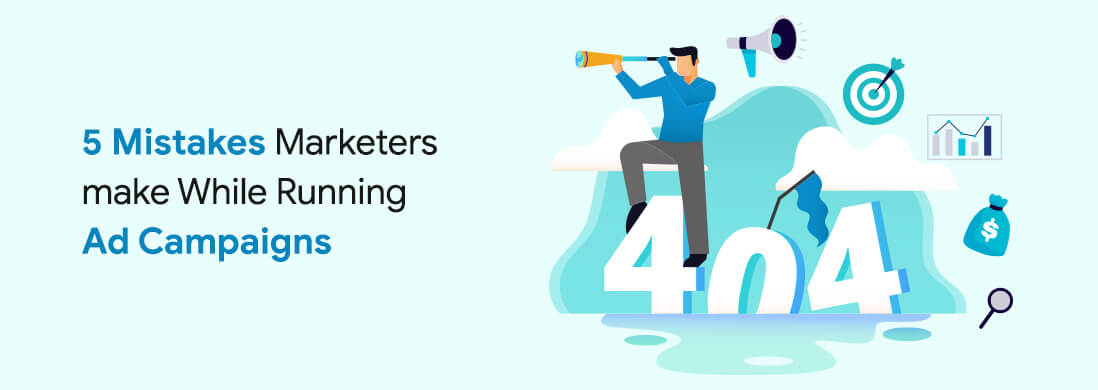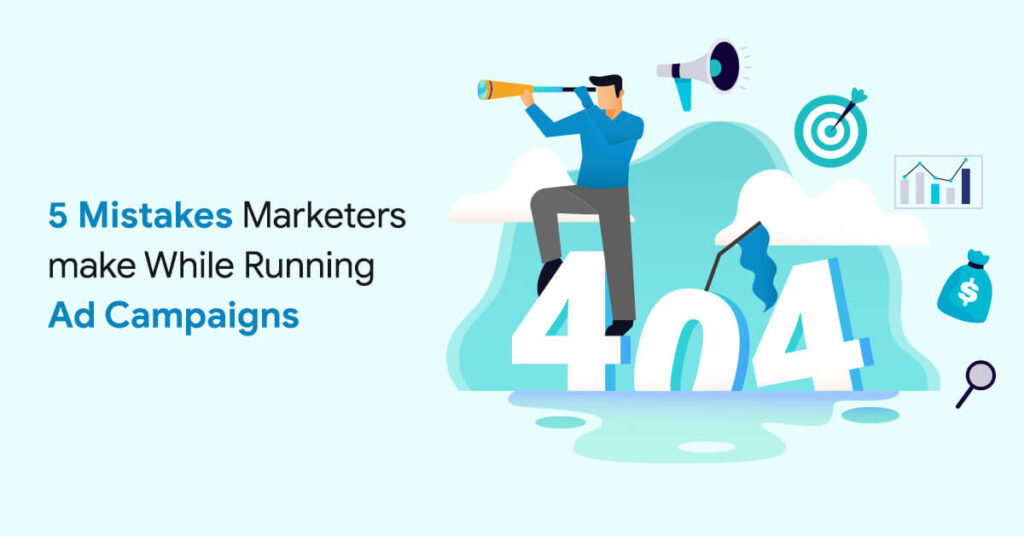Advertising campaigns can be easily underestimated especially when you have a smart DSP platform, like DV360, by your side. Easy decision making AI and ML enabled mechanisms are streamlining each and every stage of the media buying process. It checks everything right from defining the relevance of impressions to serving it on the web page or app.
If you’re a beginner in Digital Marketing, you might think that CPM or PPC campaigns are nothing but a magic tool to get more sales and engagement. It will, only if you know who to target, how and where. If you’re using a programmatic DSP, like DV360, it is of utmost importance to realise that these sophisticated technologies won’t give you results if you have poor creatives, a weak strategy and erroneous set targeting.
If your campaigns are not showing results, you’re probably making one of the mistakes listed below
Mistake 1: Prioritizing Revenue over User
When you have a big ad budget, it’s hard to avoid the temptation of placing it on every webpage possible. The problem? Many ad-units are considered to be extremely intrusive because they interfere with the user experience. That’s the only reason Google Chrome is now blocking ads like autoplay videos.
How do you make these ads friendly and profitable?
You need to diversify your media mix. You just can’t stick to banners as there are a plethora of ad formats that don’t just engage your prospects but entertain them too. Comes in the popular mobile game playable ads, rewarded ads or a video.
Instead of the traditional ad the user plays a game for 20-30 seconds. When that mini-game is over, the user can decide whether to install it or not. This concept is just next to perfect for CPI models as it brings in an audience that doesn’t uninstall the app immediately after installing it.
Furthermore, there are many video ads you can experiment with starting from interstitials, in-banner videos to in-stream formats. It’s proven that video ads are far more effective than static ones and have the capability to accommodate information that’ll fit in just one banner. Moreover, they work well with mediums like in-app, on desktops, mobile and connected TVs.
Even Native ad formats are great for almost every screen and platform. These ads are considered to be less intrusive as they have the capability to blend in with the content of the platform. They’re helpful in raising brand awareness with entertaining content.
Mistake 2: Not Knowing the Optimal Frequency of Ad Campaigns
Selecting the right frequency of impressions is considered to be one of the most crucial steps. By displaying the ads to the user too frequently you’re risking your brand’s credibility. It’s like asking users to apply ad blockers.
According to the recommendation by Google, impression frequency can be calculated by a formula and you can use it to calculate the number of impressions that will add to your marketing campaigns
Formula: Average impression frequency = Audience impressions divided by Unique audience
Frequency of 1 means that the users will watch the ad once a day, 2 means twice and so on.
If you’re showing your ads to users more than once a day, it’s a good practice to show them on different gadgets. For that you need to create several versions of the creative adapted to each environment
Keep in mind: Always calculate the optimal frequency before running the campaign to avoid overserving and under serving your Audiences
Bigger brands with a big target market usually keep their frequency cap to once or twice a week. While comparatively new brands succeed with shorter campaigns with a niche audience and higher frequency.
Mistake 3: Not following the targeting steps while planning the advertising campaign
You should always include targeting because lazy targeting undermines the strongest of campaigns. Targeted ads are twice as effective as non targeted ones. For instance, geolocation targeting can turn out to be very important for geofencing and geo targeting campaigns and geo referenced businesses.
There’s no point going too broad or too narrow with your target audience. Narrowing your target audience translates to higher conversions because you are not paying for impressions that will not convert. Also, avoid setting it too narrow as your traffic would go down. If no one clicks on your ads, it’s probably because your target audience is too narrow.
Mistake 4: Not measuring the effectiveness
To optimize your campaign properly, it’s important to review the performance and analyse the effectiveness of the steps you took while planning your campaign. To start with, you should keep in mind the initial goal of your ad campaign, be it number of clicks, conversions or just the number of impressions served.
On programmatic platforms, you can point out the dynamics of your ad campaigns in real-time. All you need for this is to aim for for a period to see the number of impressions generated and conversions. You can also see how your CPM, spend changes, move your bids and wins
When you start tracking signals of user behaviour from the website and app using pixels, you’ll be able to understand what actions lead to conversion better. This will help you take a more data driven decision making and strategy development for your marketing campaigns.
Mistake 5: Setting up campaigns & Forgetting about them
Automated advertising systems can help you set up the campaigns and forget about it easily. After registering, you fill out forms, download creatives, set daily budget spend, frequency and that launches a campaign on preferred media channels. Programmatic ad-buying automatically finds the right audience for your campaign, makes bids and serves ads to those users. Still, it’s of utmost importance to optimize the campaigns to keep them above the breakeven line and avoid spending much. Teams can also use marketing project management tools to effectively plan and monitor the campaigns and have complete visibility.
Use Pareto’s principle for optimizing your campaigns. Segment your Target Audience into categories using value like generated sales, profits, CLV, among others and remove the bottom 20 percent from targeting. Then further subgroup the rest 80 percent in two categories like the common and best performing. Analyse the clicks and conversion each group generates. Then set the higher bids for the top performing category.
Like the way you optimise your TAs you can optimise the ad spends and then list (black & white) partners according to the results. In an ideal situation you should optimise your campaigns every few weeks or at the least every month. If this falls behind the cracks, you’ll need to ask your provider for managed serve campaigns.
The bottomline is…
Every small piece like the frequency capping or targeting option have a big effect on the performance of the campaign. Use media mix across channels, approach user experience with sympathy, set up targeting and frequency wisely. After all of that is done, analyse your campaigns thoroughly to see the path you’re taking and what you can do to achieve those desired results.
Want to run an effective Ad campaign? Let us do the hard work for you. Contact us now!




